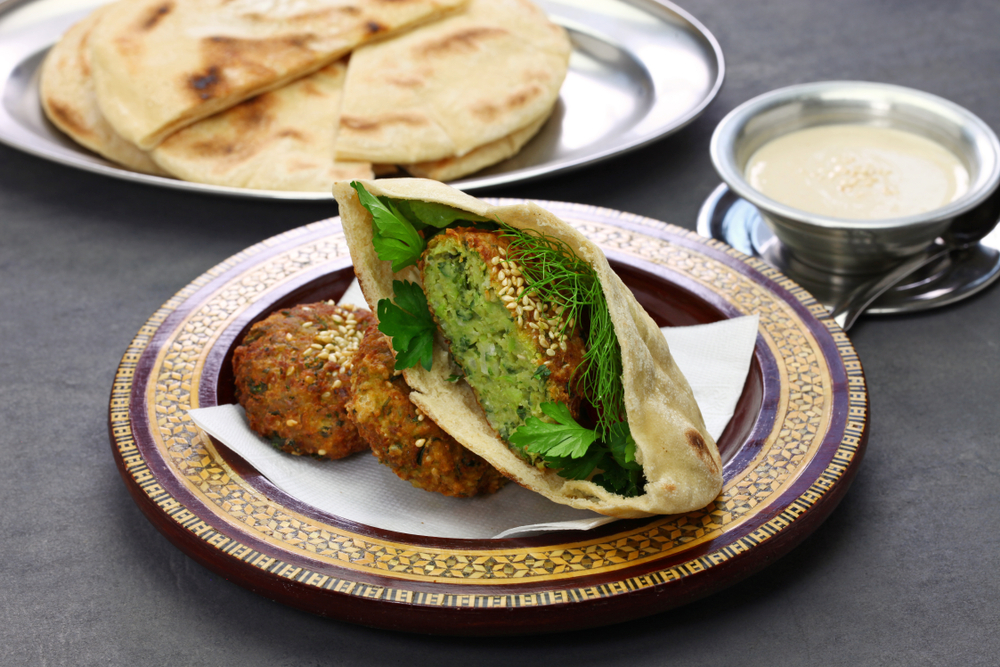Ta’ameya: Egypt’s Signature Fava Bean Falafel
In the bustling streets of Cairo, amidst the scent of spices and fresh bread, one aroma stands distinct: freshly fried Ta’ameya. Recognized as Egypt’s take on falafel, Ta’ameya offers a delightful crunch on the outside, soft and flavorful on the inside, making it a favorite among locals and tourists alike.
From Ancient Times: The Journey of Ta’ameya
Boasting roots that trace back to Pharaonic Egypt, Ta’ameya has been a staple in Egyptian diets for centuries. Historically consumed during Christian Lent, this dish transcended religious boundaries and soon became an everyday delicacy relished across the nation.
Whipping Up Ta’ameya: Ingredients & Quantities
- 2 cups dried split fava beans, soaked overnight
- 1 large onion, roughly chopped
- 3 cloves of garlic, minced
- 1 cup fresh parsley, finely chopped
- 1 cup fresh coriander, finely chopped
- 1 tsp ground cumin
- 1 tsp baking soda
- Salt and pepper to taste
- Oil for frying
- Sesame seeds (optional, for coating)
Step-by-Step: Creating Crispy Ta’ameya
- Bean Preparation: After soaking the fava beans overnight, drain them and blend in a food processor until a smooth paste forms.
- Add onions, garlic, parsley, coriander, cumin, salt, and pepper to the bean paste. Blend until everything is well-integrated and the mixture is fairly smooth.
- Stir in baking soda and let the mixture rest for 30 minutes, allowing it to rise slightly.
- Heat oil in a deep frying pan over medium heat. If you’re using sesame seeds, place them in a shallow dish.
- Shape the bean mixture into small patties or balls. If desired, press one side of each patty into the sesame seeds.
- Fry the Ta’ameya in batches, ensuring they turn golden brown and are crispy on the outside. This should take about 3-5 minutes.
- Remove with a slotted spoon, letting excess oil drip off, and transfer to paper towels to drain.
- Serve hot, preferably with tahini sauce or a simple salad. Ta’ameya also makes an excellent filling for pita bread sandwiches.
Tip: Ensure the oil is hot enough before frying. Test by dropping a small piece of the mixture into the oil; it should sizzle immediately and float to the top.

More Than Just Food: Ta’ameya in the Egyptian Heartbeat
Ta’ameya is not merely a dish; it’s an embodiment of Egyptian culture. Representing affordable, nutritious, and flavorful street food, it is a testament to Egypt’s rich culinary history and the nation’s love for hearty meals.
Delving Deeper: Ta’ameya FAQs
1. How is Ta’ameya different from other falafels?
The primary distinction lies in the beans used. While most falafels are made with chickpeas, Ta’ameya uses fava beans, granting it a unique taste and texture.
2. Can Ta’ameya be baked?
Yes, for a healthier variant, Ta’ameya can be baked. Though they won’t be as crispy as the fried version, they will still be delicious.
3. What are the best accompaniments for Ta’ameya?
Ta’ameya pairs wonderfully with tahini sauce, pickled vegetables, and fresh salads. It’s often stuffed in pita bread with these accompaniments for a fulfilling sandwich.
4. Can Ta’ameya be frozen for later use?
Yes, you can freeze the shaped, uncooked Ta’ameya. When ready to eat, fry or bake them directly from the freezer without thawing.
5. Is Ta’ameya specific only to Egypt?
While its roots are Egyptian, variations of Ta’ameya can be found in other Middle Eastern and North African countries, each with its unique twist.
Dive deeper into African street food adventures with dishes like Egypt’s Ta’ameya.
